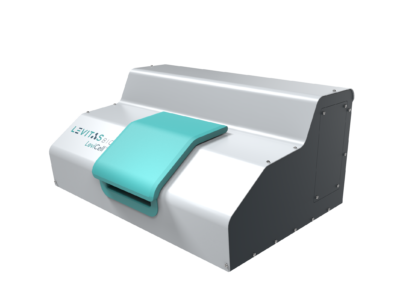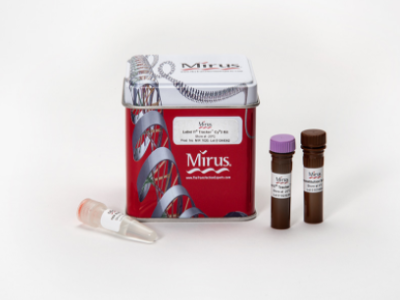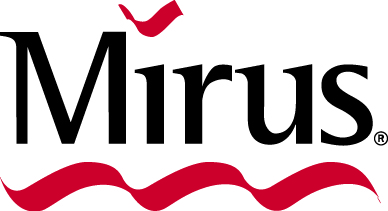TransIT®-Lenti Transfection Reagent
Increase Recombinant Lentivirus Production
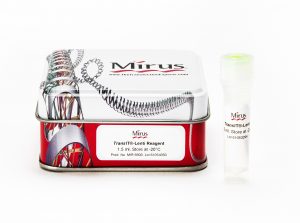
TransIT®-Lenti Transfection Reagent is designed to enhance delivery of packaging and transfer vectors to adherent HEK 293T cell types and increase recombinant lentivirus production.
- High Performance – Provide up to eight-fold higher functional titers
- Simple Protocol – No media change required, single harvest
- Animal Origin Free – Regulatory friendly

MIR 6604 TransIT®-Lenti Transfection Reagent 1 x 0.75 ml MIR 6600 TransIT®-Lenti Transfection Reagent 1 x 1.5 ml MIR 6605 TransIT®-Lenti Transfection Reagent 5 x 1.5 ml MIR 6606 TransIT®-Lenti Transfection Reagent 10 x 1.5 ml 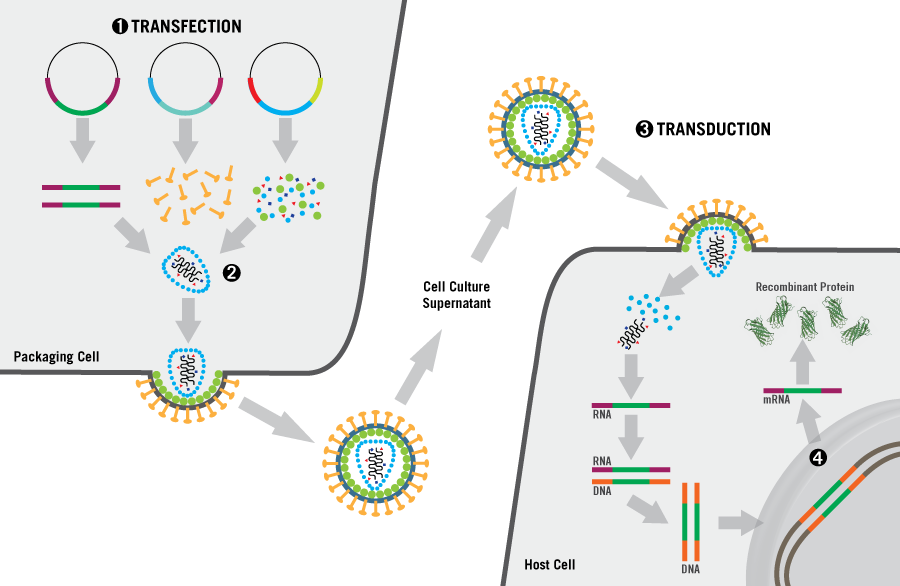
Overview of Recombinant Lentivirus Particles and Infection of Target Cell.
(1) Producer cells (e.g. 293T) are transfected with 3-4 plasmids encoding the gene of interest, vesicular stomatitis G protein (VSV-G) and essential virus proteins (e.g. gag, pol and rev). (2) Virus is assembled and released into the supernatant through budding with the producer cell plasma membrane resulting in an envelope decorated with VSV-G. The medium containing virus is filtered through a 0.45 µm filter to remove any cells. (3) Target cells are frequently transduced with recombinant lentivirus particles in the presence of a polycation to increase aggregation and uptake. The virus enters the cell and the capsid is uncoated revealing the RNA genome and viral enzymes. The viral RNA is reverse transcribed into DNA which is then integrated into the host genome. (4) Transcription and translation result in the production of the protein encoded by the gene of interest.

